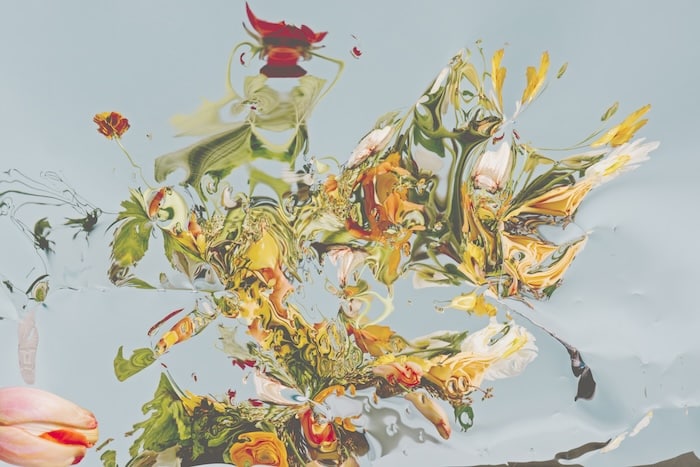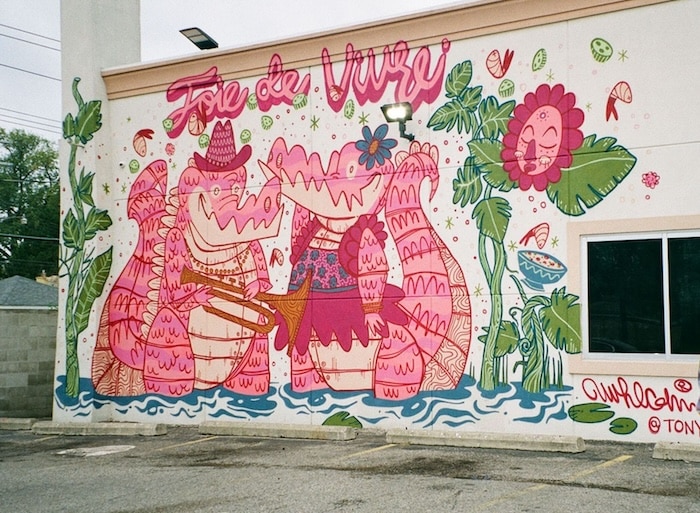It often has a “feel”: you can’t quite put your finger on it, but certain artworks have a look that simply screams “commercial setting.” But what is commercial art exactly: is it a palette? An energy? Or is it something more nuanced than that?
The answer is, of course, rather subtle and complex – but don’t feel discouraged! That also means that there’s more than one aesthetic that can work for commercial properties, which translates to more potential opportunities for artists of all stripes.
From identifying the types of work that are most requested to understanding how a space defines the need, we want to demystify this robust market – and open some doors.
Take a Look at Scale
It goes without saying, but each and every commercial space looks different, which means that every property has distinctly different needs. Lead curator Victoria Gildersleeve explains, “Playing with scale is also important; you want a work to feel impactful and complimentary to the surroundings, like flooring and fabrics.” So, how does this impact your work?
Consider the sizing of your art: does your practice focus on creating small to midsize work? It may be wise to scale up: a huge wall often requires larger pieces to truly elevate the space. However, we wouldn’t suggest that you abandon smaller art entirely! The ever-popular “gallery wall” remains a popular choice for displaying eclectic collections, and size has an impact on affordability: for some businesses, thoughtfully building a curation of moderately sized, affordable works may be the best solution.

Painter Quinn Briceño spent weeks literally dancing around the canvas to create this 27 x 9-foot mural for Neiman Marcus, St. Louis.
Commercial Art is All About Movement
One of the concepts that often buoys our curatorial thinking is “energy,” – and we frequently tap into that energy by establishing a sense of movement. Gildersleeve shares, “I like to think about how each piece relates to each other and encourages you to travel through the setting.” This is a deceptively easy concept, but one that we don’t take for granted. Take a step back from your work and look at it critically: do the pieces feel like they can play well with others? Are they uplifting and engaging, and do they raise the vibration of the room? Then you’re in a great spot!
Or do they feel drab or contemplative? Then they’d likely not work for a commercial property (and that’s okay!).
Look Towards Color for Clues
It’s been scientifically proven that color can have a profound impact on our emotional state, which means that most commercial properties will be subconsciously attracted to bright, uplifting palettes. These businesses want to create “feel-good” spaces, be they relaxing and serene or energizing and fun. And color plays a huge role in determining the final feel of a space – use this to your advantage!
Bright, vibrant colors are frequent go-tos for commercial properties, as are soft and ethereal pastels and even neutrals. Ask yourself: does your work naturally fall under these categories? Or are there a few tweaks that you’d feel comfortable making in order to appease this new market?
Convey a Brand Through Photographs
According to curator Taylor Curry, “Photography goes beyond mere imagery. It’s a powerful tool for conveying a brand’s narrative and telling compelling visual stories. For commercial spaces, incorporating photography means integrating a unique and engaging visual language into their environment.” And he’s absolutely right.
Regardless of whether it’s used in dialogue with other art forms or displayed entirely on its own, using photography to invigorate a space can create a powerful visual identity. Again, think about your practice and how your work might make the cut. Perhaps you spend hours manipulating light in order to create soft, warm abstracts. Or perhaps you specialize in gorgeous black-and-white images of local landmarks. While totally different, both types of work could be the perfect addition to a commercial space – they’re universally approachable, inoffensive, and even have the ability to speak directly to the local community.

Zach Hyman’s “Reality Coats” is an abstract fantasy bringing curiosity and wonder to NYC’s Gallery 85.
Connect Locally
Many of us are more familiar with large-scale public works created by titans of the commercial art world; beautiful and impressive, but only available to major corporations with astronomical budgets. But you don’t need to be Jeff Koons to get in on the excitement. “Our corporate customers love local art. Working with clients in different areas provides us with the unique opportunity to learn facts about unfamiliar places, as well as discover hidden talents we find there during our research,” shares Lauren Grace.
Most businesses are interested in connecting with and supporting their local community, and working with local creators plays a major role. Allow yourself a field trip one afternoon to check out various institutions and businesses – perhaps something will click. A cheerful mural might beautify a small boutique, while a thoughtful curation of varied works might enliven the newest office building. Just don’t forget your business cards.

Tony Whlgn is beloved in his community for his prolific murals that capture the Motor City.
Stick to Safe
There’s one hard and fast rule that applies to working with commercial spaces, and that is to create imagery that is inoffensive and with the broadest possible appeal. It’s critical that artists and curators alike look closely for any potentially harmful or derogatory interpretations – you can’t please everybody, but at the end of the day, you want the worst possible takeaway to simply be that you didn’t really appeal to someone’s personal tastes.
Figurative Works Can Be a Hard Sell
Interestingly, there’s one art type that rarely seems to work in a commercial space: figurative paintings and drawings. Perhaps there’s an anxiety in representing the human body, as different individuals respond to that imagery very differently. But it’s rare that it’s requested, and in our experience at ATP.art, these works rarely get approval from our clients.
But when does it work? It seems that incredibly bold, graphic, almost “pop” images make the cut. In this particular instance, a gorgeous, classic rendering may not be what you’d like to present to clients.

Currently on display at Gallery 85, Mamus Esiebo’s “Red Garden” is a rare example of figurative art working well in a commercial setting.
Identify What Sparks Joy
As always, when considering a new client base or audience, you need to identify – and speak to – their specific needs. While an art buyer may have a taste for darker decor in their own home, these public spaces are used by many diverse people day in and day out – and creating universally “feel good” imagery is critical to being considered for a commercial space.
A focus on warm colors, unexpected shapes, or peaceful landscapes are all great candidates for this robust market, as are energizing abstracts and serene pastels. Just try to step away from your own emotional attachment to your art and ask: how might this piece impact someone’s day?
Have you had success selling other types of commercial art to businesses? Let our readers know in the comment section below.
